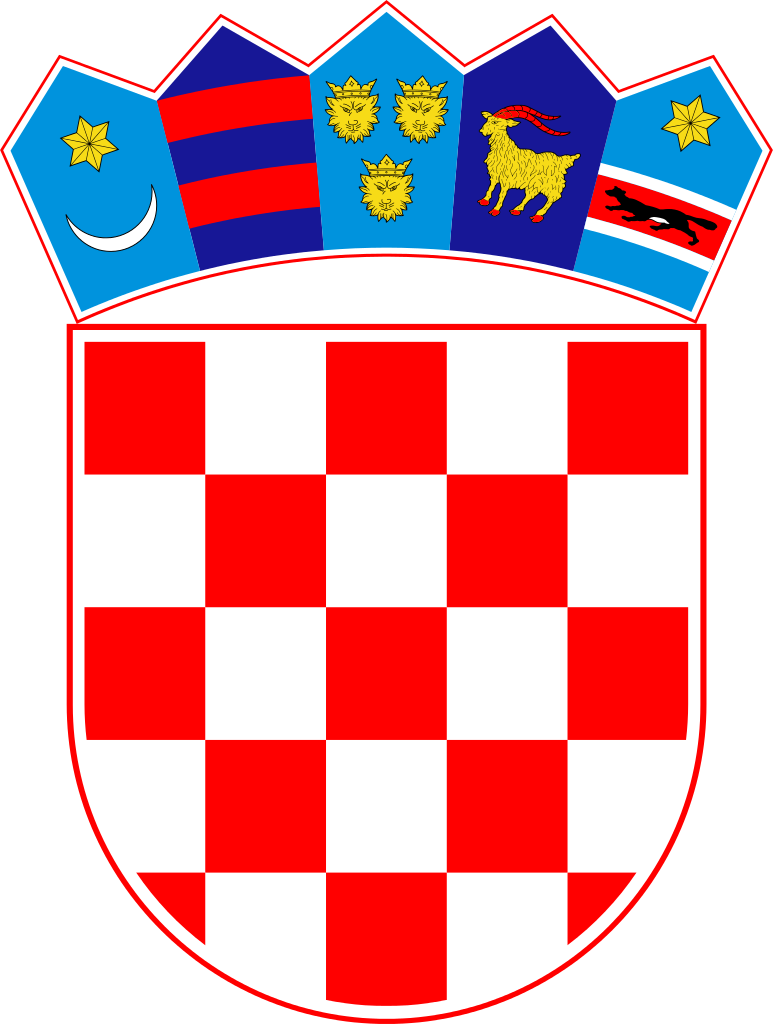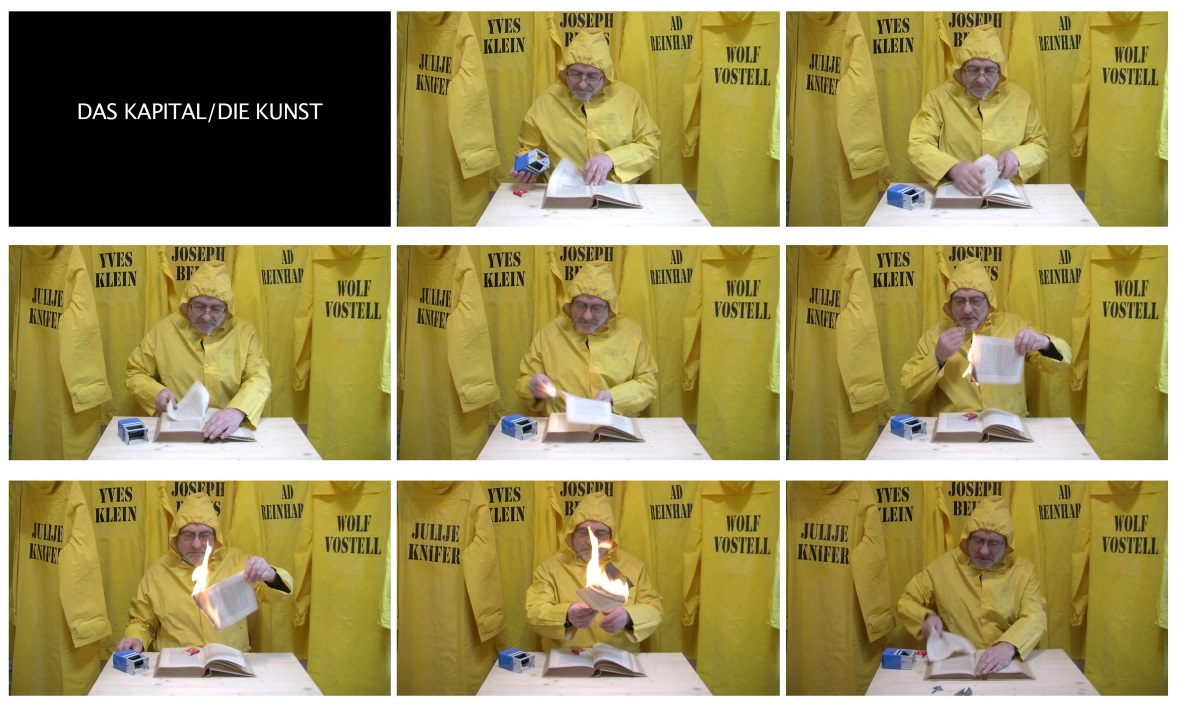marijan molnar
inside/outside
Marijan Molnar, Das Kapital/Die Kunst, video, 21′ 15”, 2016
opening Saturday 21 May, 18.30
welcome speech by Nevenka Grdinić
introduction by Marina Gržinić
presentation of Molnar’s work by Darko Šimičić
opening conversation with Marijan Molnar
opening conversation with Marijan Molnar
In the exhibition “Inside/Outside”, Marijan Molnar presents a body of works generated in a span of four decades, from 1977 to 2016. He gives the viewer what is practically a lesson in the potentiality of the conceptual art from the 1970s that developed inside the new artistic practice in Croatia. As a conceptualist and body artist Molnar is in addition an emblematic and powerful figure in the trajectory of conceptual art from its locally executed potentiality in the space of socialism and the former Yugoslavia to its global “essence” in neoliberal capitalism.
Molnar takes us, though, without any overt chronology, through a thrilling travelogue that in the 1970s starts with a mixture of body and process art and with analytical counting. This is the time in Molnar’s work when everything is connected with measurement. Mathematics rules, the body measures, the gaze counts; the space of the gallery is in the range of his body. Also featured is an ubiquitous constant movement between body and language. Steps are counted and body movement patiently recorded. The super 8 mm films also follow such measurements; they record the mathematics of time and space and of bodily action.
The 1980s are more directed toward the public space, to which claims are made to such a point that the gallery can be a garage and the garage can be a gallery. The work is all about the point of uttering a demand for a space. Self-reflexivity is central, the power to demand the rights to be a conceptual artist and to transcend the space of the gallery. Of course, all is colored male, though a feminine point is present in what I would call an explicitly Molnar hysterical gesture. In Molnar’s work this is a gesture that implicates desire without borders, without limits. It is also present in the whole spectrum of his demand for the democratization of art. It starts with Marx and Bakunin; it is a gesture for pure anarchy, for rewriting, for chaos that acts and performs after the conceptualism of the 1970s that counted so exactingly and so analytically formally.
In addition, the 1980s developed the same demands on the art work that apply to any other work that exists in the relation of labor and state socialism, and what was in capitalism captured by the relation between labor and capital. To withdraw from art as a fief of the bourgeoisie and move in the direction of art as social practice, with conceptual and body art being seen as sacrilegious to the ideals of socialist realism and high modernism so popular in the academic art circuits. Molnar focused on the creative force of living labor, but also on labor as a possible form of resistance, which is an important factor in the autonomist feminist legacy. It is the Italian Autonomia movement from the seventies that resurfaces in the attitude towards contemporary art.
The 1990s literally brought about an inversion, as capitalism and consumerism and TV mass media captured art, now functioning as a Mickey Mouse business enterprise. Molnar asks what the shape of art is in all that. What is the artistic community to be like? Against the power of capital and business to co-opt art and creativity, Molnar performs a critique of the neoliberal belief in the normative role of the contemporary art institution.
Consequently, interventions in art could pass as almost invisible gestures, such as for example leaving matches in a corner of the gallery.
Now it is time to reemerge but differently. Hence the video “Family” from 2014, which is queer at its best. Post-socialist life in the countryside, transforms an old woman (performed by Molnar himself) into an almost, still and mute, rare species. Her seclusion functions as the best trophy image to be taken. It seems that the current spectator is just the ultimate voyeuristic scum.
In the end is the video “Das Kapital/Die Kunst” from 2016. Capital and Art, captured in between the neuter grammatical gender of capital (the German article “das”) and the feminine gender of art (the German article “die”) take a harsh but realistic look at contemporary art. It is not strange that the last work is a tribute to Karl Marx’s “Kapital” in which Marx provided a critical analysis of capitalism as political economy. Art is today a hostage of money, financialization, the art market and show business. Molnar in the video performs an intervention that counts and summarizes the time between 1977 and 2016 (again, as in his start in the 1970s) but altogether differently. The names of Julije Knifer, Yves Klein, Joseph Beuys, Ad Reinhard, Wolf Vostell are imprinted on raincoats, and Molnar is wearing himself a raincoat, while he wildly stamps the pages of Marx’s “Kapital”, tears away pages of the book, burns and crushes pages of the book. The passage from the neuter gender of capital to the feminine position of art is an obsessive process caught today in the over-bureaucratic machine of administration and financialization.
It might seem pretty cynical but it also underlines a continuing sense of hope, precisely because it is without hope.
Marina Gržinić
Marina Gržinić
Marina Gržinic, professor at the Academy of Fine Arts in Vienna, is a philosopher and an artist. She lives in Ljubljana and works in Ljubljana and Vienna. In 2014 she co-authored with Šefik Tatlic the book Necropolitics, Racialization and Global Capitalism: Historicization of Biopolitics and Forensics of Politics, Art, and Life (Lexington Books, USA, 2014). Gržinic has been making video art works, installations and performative exhibitions since 1982 and in collaboration with the artist and art historian Aina Šmid from Ljubljana.
Darko Šimicic is an art critic and curator based in Zagreb, Croatia. His recent interests are focused on avant-garde in the 1920s and 1930s (Zenithism, Dada, Bauhaus, photomontages) and on Croatian art in the 1960s and 1970s (Gorgona, Mangelos, Group of Six Artists, Tomislav Gotovac). He co-founded the Tomislav Gotovac Institute in Zagreb and is in the team of experts for Gotovac’s retrospective exhibition due to open at the Museum of Modern and Contemporary Art in Rijeka in 2017.The exhibition is a Trieste Contemporanea production under the patronage of the Consulate General of the Republic of Croatia in Trieste and supported by the Regione Autonoma Friuli Venezia Giulia. It is organised, curator Giuliana Carbi Jesurun, with the collaboration of the Institute for Contemporary Art in Zagreb and Studio Tommaseo in Trieste, with the participation of the Casa dell’Arte in Trieste and thanks to the assistance of Ms Dubravka Cherubini and Mr Berislav Vodopija.


Generalni konzulat
Republike Hrvatske
u Trstu
u Trstu
Trieste, Studio Tommaseo, via del Monte 2/1
opening times: Monday – Saturday, 17.00 – 20.00
free admission
Trieste Contemporanea–Dialogues with the Art of Central Eastern Europe
www.triestecontemporanea.it
info@triestecontemporanea.it
+39 040 639187
